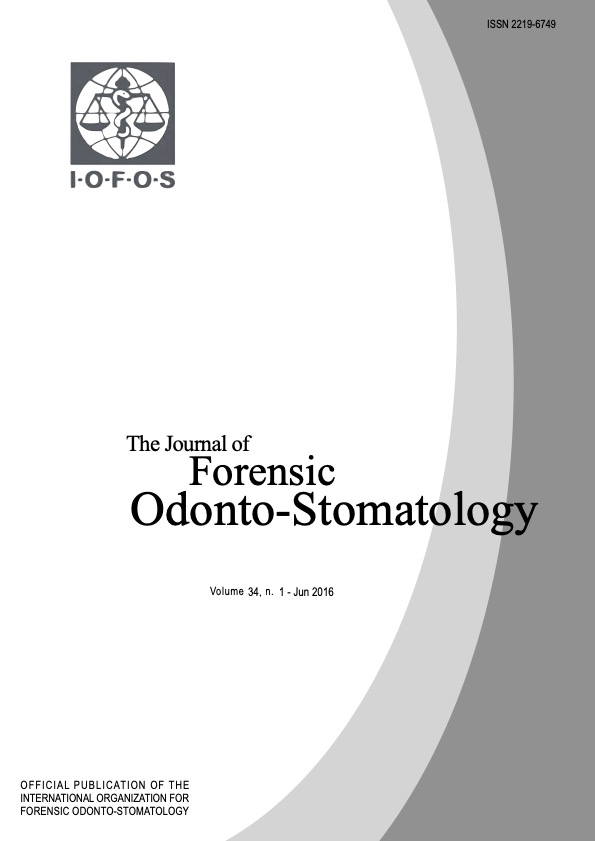Three-dimensional Validation of the Impact of the Quantity of Teeth or Tooth Parts on the Morphological Difference Between Twin Dentitions
Keywords:
Forensic dentistry, Bitemark, Dental identification, Morphology, 3D morphometric comparisonAbstract
BACKGROUND: The number of teeth involved in cases of bite-mark analysis is generally fewer in comparison to the number of teeth available for cases of dental identification. This decreases the amount of information available and can hamper the distinction between bite suspects. The opposite is true in cases of dental identification and the assumption is that more teeth contribute to a higher degree of specificity and the possibility of identification in these cases. Despite being broadly accepted in forensic dentistry, this hypothesis has never been scientifically tested.
OBJECTIVE: The present study aims to assess the impact of the quantity of teeth or tooth parts on morphological differences in twin dentitions.
MATERIAL AND METHODS: A sample of 344 dental casts collected from 86 pairs of twins was used. The dental casts were digitized using an automated motion device (XCAD 3D® (XCADCAM
Technology®, São Paulo, SP, Brazil) and were imported as three-dimensional dental model images (3D-DMI) in Geomagic Studio® (3D Systems®, Rock Hill, SC, USA) software package. Sub samples were established based on the quantity of teeth and tooth parts studied. Pair wise morphological comparisons between the corresponding twin siblings were established and quantified.
RESULTS: Increasing the quantity of teeth and tooth parts resulted in an increase of morphological difference between twin dentitions. More evident differences were observed comparing anterior vs. entire dentitions (p<0.05) and complete vs. partial anterior dentitions (p<0.05).
CONCLUSION: Dental identifications and bite-mark analysis must include all the possibly related dental information to reach optimal comparison outcomes.

